The United Arab Emirates (UAE) is at the forefront of sustainable architecture and construction, with a commendable reputation for its commitment to green building practices. With a high number of LEED-certified projects and a focus on energy efficiency, eco-friendly materials, and renewable energy, the UAE has emerged as a global leader in sustainable development.
From innovative designs to environmentally conscious buildings, the UAE showcases a range of top green buildings that exemplify the country’s dedication to sustainability. These buildings not only contribute to a greener future but also offer countless benefits to the occupants and the surrounding community.
Key Takeaways:
- The UAE is among the top countries globally for LEED certifications and has over 550 LEED-certified projects.
- Sustainable architecture in the UAE encompasses various elements, including passive solar approaches, net-zero energy consumption, and smart climate strategies.
- Notable green buildings in the UAE include the Lattice-Domed Parliament Building, The Sustainable City, and the Pacific Controls Headquarters Building.
- LEED and Estidama certifications play a crucial role in recognizing and promoting sustainable design and practices in the UAE.
- The UAE’s commitment to sustainability extends to various sectors, including healthcare, transportation, and urban development.
Lattice-Domed Parliament Building, Abu Dhabi, UAE
The Lattice-Domed Parliament Building in Abu Dhabi, designed by Ehrlich Architecture, showcases the remarkable strides in sustainable architecture that the UAE has made. This iconic structure employs a passive solar approach and features a unique lattice façade that creates a microclimate within the building. The passive solar design maximizes natural light and minimizes the need for artificial lighting, reducing energy consumption.
The Estidama five pearl rating awarded to the Lattice-Domed Parliament Building signifies its outstanding sustainability performance. The five pearl rating is the highest achievable rating under the Estidama system, which assesses the environmental, economic, and social sustainability of buildings in the UAE.
“The Lattice-Domed Parliament Building is a shining example of sustainable architecture in the UAE. Its innovative design not only reduces environmental impact but also demonstrates a commitment to creating spaces that promote the well-being and comfort of its occupants.”
The sustainable design features of the Lattice-Domed Parliament Building extend beyond energy efficiency. The building is constructed using locally sourced materials, reducing the carbon footprint associated with transportation. Additionally, it incorporates water-saving technologies and promotes efficient water management practices.
This landmark structure serves as a testament to the UAE’s dedication to sustainable development and setting new standards in architectural design. The Lattice-Domed Parliament Building harmoniously combines innovation, functionality, and environmental consciousness, making it a symbol of sustainable architecture in the UAE.
| Building Feature |
Details |
| Architect |
Ehrlich Architecture |
| Location |
Abu Dhabi, UAE |
| Design Approach |
Passive Solar |
| Estidama Rating |
Five pearls |
The Sustainable City, Dubai, UAE
The Sustainable City in Dubai, UAE, is a sprawling mixed-use community that serves as a pioneering example of sustainable living. This forward-thinking development incorporates various eco-friendly concepts and practices to create an environmentally conscious and socially responsible urban environment.
One of the standout features of The Sustainable City is its commitment to urban farming. The community boasts 11 bio-dome greenhouses, where residents can grow fresh produce in a controlled and sustainable manner. This not only promotes self-sufficiency but also reduces the carbon footprint associated with food transportation.
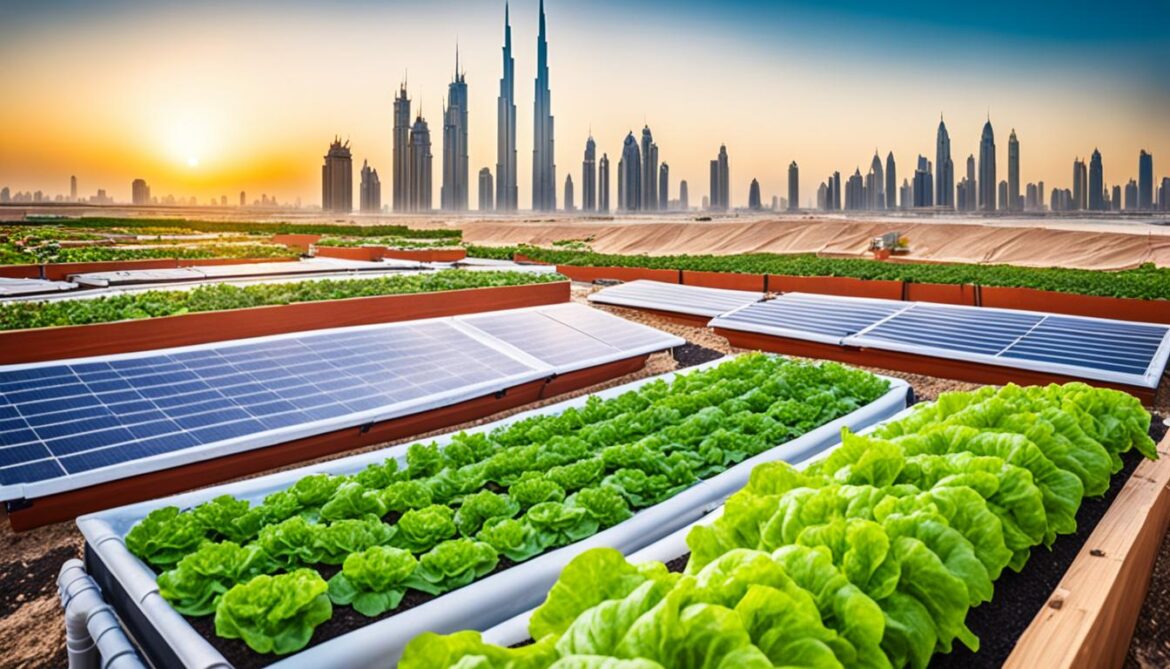
The community’s dedication to renewable energy is exemplified by the extensive use of solar panels for energy generation. These panels harness the abundant sunlight in the region, supporting the community’s goal of achieving net-zero energy consumption. By embracing solar power, The Sustainable City sets an inspiring precedent for sustainable development in the UAE.
Beyond energy efficiency, the community’s buildings are designed to minimize their environmental impact. With net-zero energy consumption, the structures are engineered to operate efficiently and responsibly, reducing their carbon footprint and promoting a cleaner environment. The Sustainable City truly sets the standard for eco-friendly communities in the UAE.
| Key Features of The Sustainable City |
Benefits |
| 11 bio-dome greenhouses for urban farming |
• Promotes self-sufficiency in food production
• Reduces carbon footprint associated with food transportation |
| Extensive use of solar panels for energy generation |
• Supports net-zero energy consumption
• Harnesses abundant sunlight in the region
• Reduces reliance on non-renewable energy sources |
| Buildings with net-zero energy consumption |
• Minimizes environmental impact
• Reduces carbon footprint
• Promotes energy efficiency and conservation |
“The Sustainable City in Dubai demonstrates that sustainable living is not only feasible but also rewarding. By integrating urban farming, renewable energy, and net-zero energy consumption, this community showcases the potential for eco-friendly construction and the creation of a truly sustainable urban environment.” – Sustainability Expert
Pacific Controls Headquarters Building, Dubai, UAE
The Pacific Controls Headquarters Building in Dubai is a pioneering example of sustainable architecture in the United Arab Emirates (UAE). As the first building in the country to receive a LEED platinum rating, it sets the standard for green buildings in the region.

This remarkable building incorporates various sustainable features that contribute to its LEED platinum certification. One key aspect is the implementation of soil erosion measures, which help preserve the surrounding environment and prevent degradation. This ensures that the construction and operation of the building have minimal impact on the local ecosystem.
Water efficiency is another focal point of the Pacific Controls Headquarters Building’s sustainable design. The building adopts innovative water management systems and practices that minimize water consumption, thus conserving this precious resource in the water-scarce region.
One of the noteworthy sustainable features of the building is its utilization of solar photovoltaic systems. These systems harness solar energy to generate clean electricity that powers the building, reducing reliance on traditional energy sources and decreasing carbon emissions.
The commitment to sustainability demonstrated by the Pacific Controls Headquarters Building serves as an inspiration to architects, developers, and organizations throughout the UAE and beyond. It showcases the potential for constructing environmentally responsible buildings that prioritize energy efficiency and minimize environmental impact.
Sheikh Khalifa Medical City, Abu Dhabi, UAE
Sheikh Khalifa Medical City in Abu Dhabi is a sustainable project designed to house three hospitals under one roof. It has achieved a two-pearl rating by Estidama, a sustainability rating system in the UAE. This accomplishment demonstrates the commitment of Sheikh Khalifa Medical City to environmentally friendly practices.
The medical city incorporates solar collectors, which harness the power of the sun to generate clean energy. These solar collectors help reduce the reliance on traditional energy sources, contributing to a greener and more sustainable healthcare facility.
Furthermore, Sheikh Khalifa Medical City implements a smart climate strategy to optimize energy usage and ensure a comfortable environment for patients and staff. By using intelligent climate control systems, the medical city minimizes energy wastage and maintains an optimal temperature.
“Sheikh Khalifa Medical City sets a new standard for sustainability in the healthcare sector in the UAE. Through its Estidama two-pearl rating, solar collectors, and smart climate strategy, it showcases the integration of green practices into the medical field,”
Benefits of Sustainability at Sheikh Khalifa Medical City:
- Reduced environmental impact through energy-efficient measures
- Cost savings on energy bills through the utilization of solar energy
- Enhanced patient experience through optimized climate control
- Promotion of a healthier and greener community
With its focus on sustainability, Sheikh Khalifa Medical City is a shining example of how the healthcare sector can contribute to a greener and more sustainable future in the UAE.
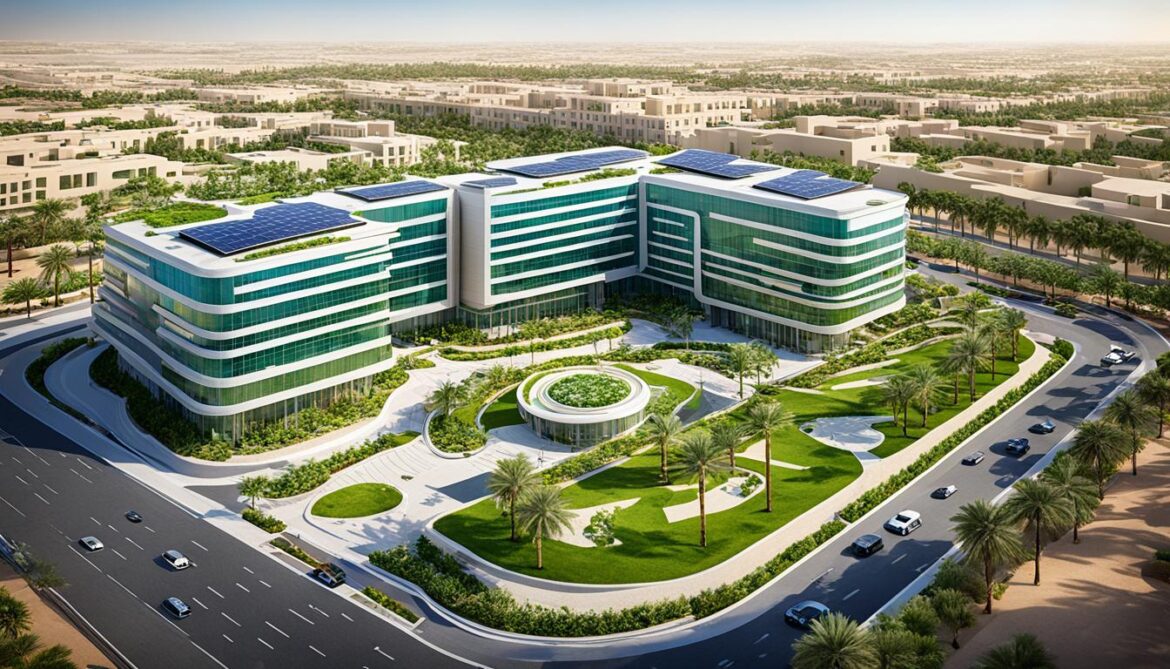
Siemens Headquarters, Abu Dhabi, UAE
The Siemens Middle East Headquarters in Abu Dhabi is a benchmark for sustainable projects in the Middle East. It has achieved a LEED platinum rating and features a compact and efficient design that reduces carbon emissions and utilizes fewer materials. This project demonstrates that sustainability can be achieved without sacrificing aesthetics.
The Siemens Headquarters in Abu Dhabi showcases a prime example of sustainable design, exemplifying the company’s commitment to environmental responsibility. The building’s LEED platinum rating certifies its adherence to the highest standards of sustainable construction and operation.
Designed with a compact and efficient layout, the Siemens Headquarters maximizes the use of space while minimizing its ecological footprint. By adopting innovative design strategies, the building reduces energy consumption, water usage, and waste production.
The commitment to sustainable design is evident in every aspect of the building. From its intelligent lighting systems and efficient HVAC solutions to its use of renewable energy sources, Siemens Headquarters sets a new standard for sustainable commercial buildings.
The interior spaces of the headquarters are designed with occupant comfort and well-being in mind. Natural light floods the workspaces, creating a pleasant and productive environment. The building also incorporates green spaces and outdoor amenities, promoting a healthy and sustainable work-life balance for its employees.
The Siemens Headquarters in Abu Dhabi is not just a testament to sustainable design; it is a living example of how businesses can prioritize environmental responsibility without compromising on functionality or aesthetics.
The innovative and sustainable design of Siemens Headquarters has garnered international recognition and numerous awards for its forward-thinking approach to construction and operation. By showcasing the possibilities of sustainable design, Siemens is leading the way towards a greener and more sustainable future.
Key Features of Siemens Headquarters:
- LEED platinum rating for sustainable design
- Compact and efficient layout to reduce carbon emissions
- Optimized use of materials to minimize environmental impact
- Intelligent lighting systems and energy-efficient HVAC solutions
- Incorporation of renewable energy sources
- Integration of green spaces and outdoor amenities
The Irena building, Masdar, UAE
The Irena building, located in Masdar, Abu Dhabi, serves as the headquarters for the International Renewable Energy Agency. This iconic structure has been awarded a prestigious four-pearl rating by Estidama, highlighting its exceptional commitment to sustainability.
One of the key features of the Irena building is its integration of solar panels for energy generation. These solar panels harness the abundant sunlight in the UAE, contributing to the building’s renewable energy supply. By utilizing solar power, the Irena building reduces its carbon footprint and dependence on traditional energy sources.
In addition to its use of renewable energy, the Irena building is also designed with a strong emphasis on water usage reduction. Compared to other buildings in Abu Dhabi, the Irena building employs innovative strategies to conserve water resources. These measures not only minimize water wastage but also demonstrate the UAE’s dedication to sustainable water management.
As an architectural masterpiece, the Irena building embodies the UAE’s commitment to both renewable energy and environmental stewardship. Its Estidama four-pearl rating and sustainable features serve as inspiration for future buildings in the region.
| Key Features |
Benefits |
| Solar panels for energy generation |
– Reduced carbon footprint
– Lower reliance on traditional energy sources |
| Water usage reduction strategies |
– Minimized water wastage
– Demonstrates sustainable water management |
The Irena building is a testament to the UAE’s dedication to renewable energy and sustainable practices. Its design and features set a precedent for future green buildings in the country, showcasing the possibilities of integrating sustainability into urban development.
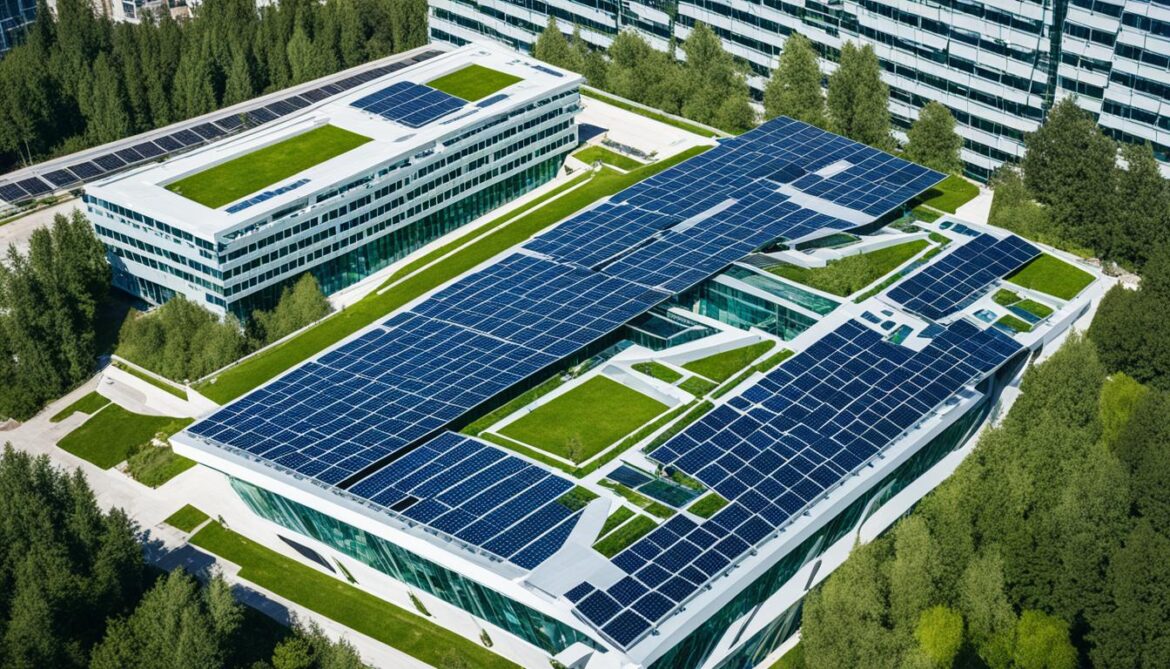
Midfield Terminal, Abu Dhabi International Airport
The Midfield Terminal at Abu Dhabi International Airport is a remarkable example of energy-efficient design and sustainable architecture. With its Estidama three-pearl design rating, this terminal has set a new standard for airport sustainability. From its innovative features to its commitment to reducing energy consumption, the Midfield Terminal is a testament to the United Arab Emirates’ dedication to environmental stewardship.

One of the key features of the Midfield Terminal is its high-performance double glazing façade, which maximizes natural light while minimizing heat transfer. This design not only reduces the terminal’s reliance on artificial lighting but also helps to regulate indoor temperatures, resulting in significant energy savings.
The Midfield Terminal sets a new standard for sustainable airport design, showcasing the UAE’s commitment to environmental stewardship and innovative architecture.
The terminal also incorporates smart lighting and ventilation systems that intelligently optimize energy usage based on real-time occupancy and environmental conditions. By adapting to the needs of the space, these systems minimize unnecessary energy consumption and create a comfortable environment for travelers.
Another notable feature of the Midfield Terminal is its indoor park, which not only enhances the aesthetic appeal but also promotes human well-being. The park utilizes recycled water for irrigation, further reducing the terminal’s reliance on freshwater resources.
Energy-Efficient Design Features:
- High-performance double glazing façade
- Smart lighting and ventilation systems
- Indoor park using recycled water
By prioritizing sustainability and energy efficiency, the Midfield Terminal sets a positive example for future airport developments. It underscores the importance of incorporating environmentally friendly practices into large-scale infrastructure projects, and it demonstrates that energy-efficient design is not only feasible but also economically viable.
| Benefits of the Midfield Terminal’s Energy-Efficient Design |
Statistics |
| Reduced energy consumption |
Up to 40% reduction in energy usage compared to conventional airport terminals |
| Sustainable water management |
Utilization of recycled water for the indoor park |
| Enhanced passenger experience |
Comfortable and visually appealing indoor park |
Sources:
- Abu Dhabi Airports
- Estidama
Twin Al Bahr Towers, Abu Dhabi
The Twin Al Bahr Towers in Abu Dhabi are a remarkable example of sustainable architecture in the UAE. Not only do they hold the prestigious LEED silver rating, but they also boast a mesmerizing and unique parasol-inspired façade design.
The innovative parasol-inspired façade serves a dual purpose. Firstly, it reduces heat transfer, ensuring that the buildings remain cool and energy-efficient even in the scorching desert climate. This feature significantly contributes to the towers’ reduced carbon dioxide emissions, aligning with the UAE’s commitment to sustainability and eco-friendliness.
Furthermore, the parasol-inspired design adds a touch of elegance and visual appeal to the towers’ aesthetics. It creates a striking presence in the Abu Dhabi skyline, making the Twin Al Bahr Towers an architectural landmark that captures the essence of sustainability and design integration.
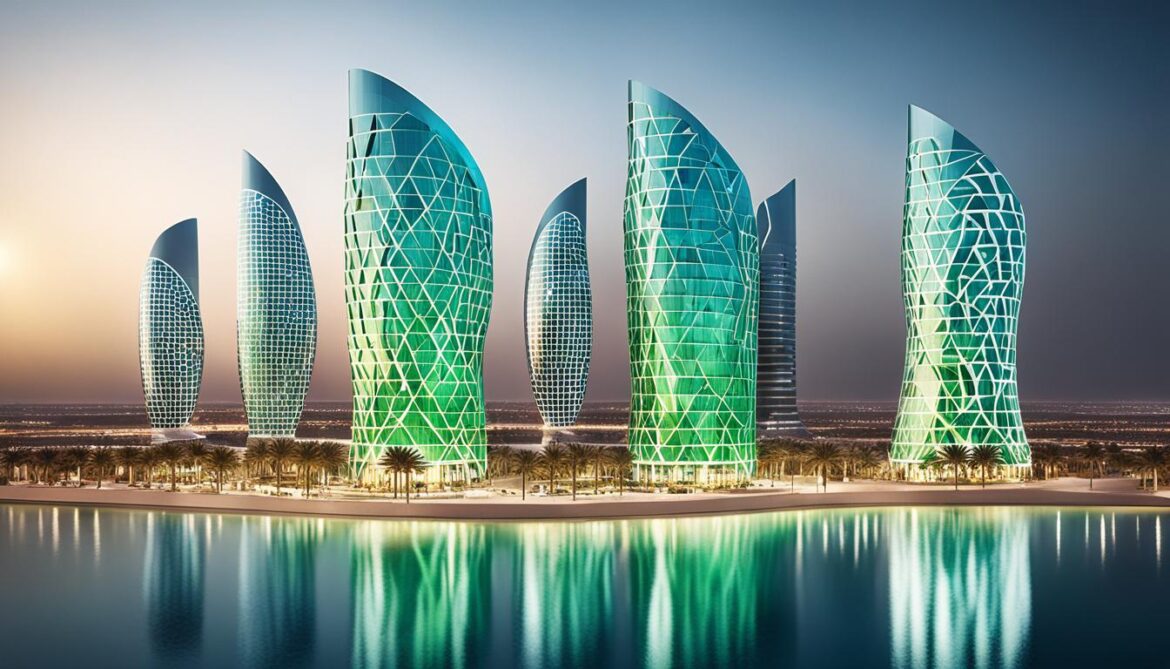
| Features |
Benefits |
| LEED silver rating |
Recognition of sustainable design and construction |
| Parasol-inspired façade |
Reduces heat transfer, decreases carbon dioxide emissions, and enhances aesthetic appeal |
The Twin Al Bahr Towers perfectly demonstrate the UAE’s dedication to sustainable development and its commitment to creating a greener future. These iconic structures showcase how environmental consciousness can be seamlessly integrated into architectural masterpieces, setting a standard for sustainable buildings in the region.
Masdar City, UAE
Masdar City, located in Abu Dhabi, is renowned as the world’s first zero-carbon, zero-emissions city. This groundbreaking urban development showcases the United Arab Emirates’ unwavering commitment to sustainable practices and cutting-edge green technologies.
At the heart of Masdar City’s sustainability initiatives are its solar energy-smart buildings. These innovative structures incorporate state-of-the-art solar panels to harness the power of the sun, providing a reliable and renewable source of energy. By relying on solar power, the city significantly reduces its carbon footprint and contributes to a cleaner, greener environment.
In addition to solar energy, Masdar City leverages wind towers for natural cooling. These traditional Arabian architectural features harness the natural airflow to provide effective and efficient cooling while minimizing energy consumption. By embracing wind towers, Masdar City showcases the successful fusion of traditional design principles with contemporary sustainability practices.
In Masdar City, solar energy-smart buildings and wind towers combine to create a truly innovative and environmentally friendly urban environment.
Masdar City is not merely an experiment in sustainable living; it is a fully functional community. The city offers a range of amenities and services designed to enhance the quality of life for its residents. From state-of-the-art education facilities to an advanced transportation network, Masdar City embodies the concept of a holistic and sustainable society.
The commitment to sustainability extends beyond the city’s architecture and infrastructure. Masdar City embraces innovative waste management systems, recycling initiatives, and water conservation practices to minimize its environmental impact and preserve precious resources.
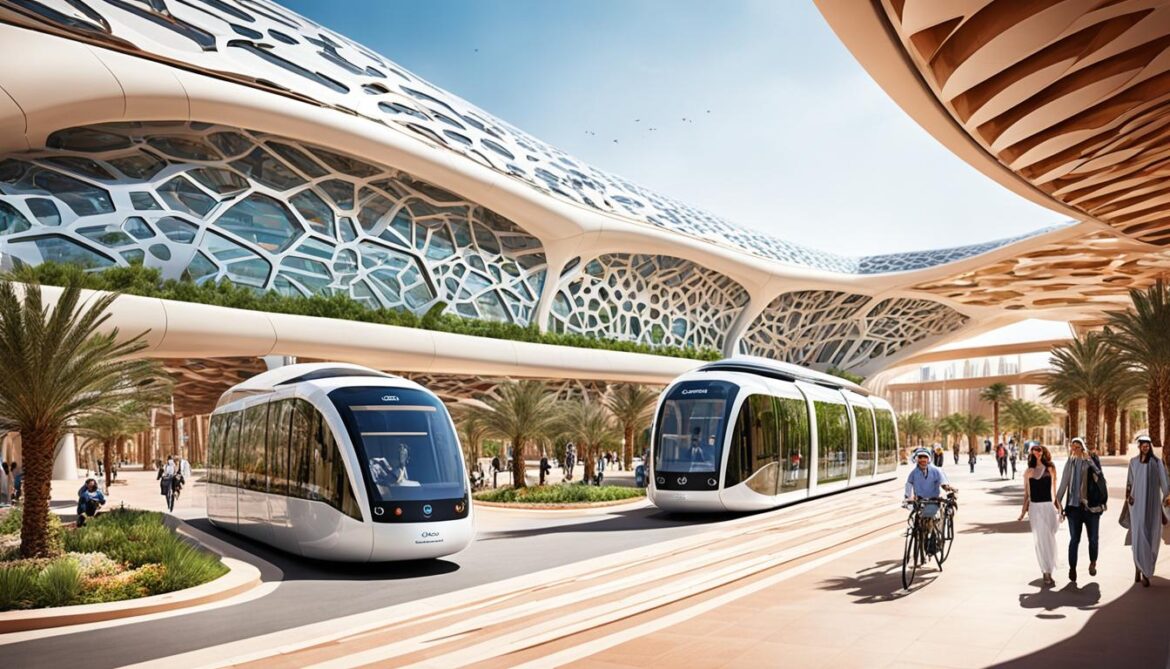
Masdar City serves as an inspiration and a model for future urban developments worldwide. By proving that a zero-carbon city is both technologically feasible and economically viable, Masdar City paves the way for a more sustainable and resilient future.
Aldar Market, Abu Dhabi
The Aldar Market in Abu Dhabi has recently undergone a remarkable sustainable makeover, transforming it into a shining example of eco-friendliness. This renovation has incorporated a range of eco-friendly elements, including the introduction of roof gardens and sliding roof panels that allow for better control of the internal environment.
This sustainable makeover of the Aldar Market demonstrates a shift towards transforming traditional buildings into environmentally conscious and sustainable spaces. By integrating green initiatives, such as roof gardens and sliding roof panels, the market showcases its commitment to reducing its environmental impact and embracing sustainability.
Not only does the Aldar Market’s sustainable makeover enhance its green credentials, but it also sets a positive example for other buildings and businesses in Abu Dhabi and the UAE. By prioritizing sustainability in its design and operations, the market highlights the importance of adopting eco-friendly practices and demonstrates how businesses can play a key role in building a greener and more sustainable future for the region.
Roof Gardens: Bringing Nature to Urban Spaces
The addition of roof gardens to the Aldar Market brings numerous benefits to the building and its surroundings. These green spaces not only provide a tranquil escape for visitors and workers but also have a positive impact on the environment.
- Improves air quality: The plants and trees in the roof gardens help to purify the air by absorbing pollutants and releasing oxygen.
- Reduces urban heat island effect: The vegetation on the roof gardens helps to absorb and dissipate heat, reducing the overall temperature of the surrounding area.
- Enhances biodiversity: The roof gardens create habitats for birds, insects, and other wildlife, promoting biodiversity in the urban environment.
- Provides insulation: The layer of vegetation on the roof gardens acts as an additional layer of insulation, reducing the need for excessive heating or cooling indoors.
The roof gardens at the Aldar Market not only add a touch of greenery to the urban landscape but also contribute to a more sustainable and environmentally friendly building.
Sliding Roof Panels: Controlling the Internal Environment
The incorporation of sliding roof panels in the Aldar Market’s sustainable makeover allows for better control of the internal environment, optimizing energy usage and enhancing the comfort of visitors and workers.
These innovative roof panels can be adjusted to regulate the amount of natural light and ventilation entering the building, reducing reliance on artificial lighting and air conditioning systems. By harnessing natural light and ventilation, the Aldar Market not only minimizes energy consumption but also creates a pleasant and sustainable indoor environment.
The sliding roof panels installed in the Aldar Market demonstrate the importance of smart design and technology in achieving sustainability goals. By prioritizing energy-efficient features, the market sets a precedent for other buildings to follow, encouraging the adoption of sustainable practices across Abu Dhabi and beyond.
Conclusion
The United Arab Emirates (UAE) has established itself as a global leader in sustainable architecture and green building design. With a multitude of LEED-certified projects and an unwavering dedication to eco-friendly construction, the UAE is setting new standards for sustainable development in the region. These top green buildings not only contribute to the preservation of the environment but also offer numerous benefits to their occupants.
From the Lattice-Domed Parliament Building in Abu Dhabi to the iconic Masdar City, the UAE showcases a diverse range of innovative and energy-efficient structures. These buildings incorporate sustainable design principles and utilize renewable energy technologies, such as solar panels and wind towers, to minimize their environmental impact. The commitment to green building certification, such as Estidama and LEED, further demonstrates the UAE’s determination to create a sustainable future.
Furthermore, the UAE’s sustainable architecture companies play a pivotal role in driving the country’s green building revolution. These companies leverage their expertise to prioritize sustainability, implementing energy-efficient practices and utilizing green building materials. As a result, the UAE is not only shaping the future of sustainable architecture but also inspiring other nations to follow suit.
With a continued focus on sustainable development and a commitment to renewable energy, the UAE’s green building sector is poised for continuous growth. As the country advances towards a more sustainable future, the rest of the world can look to the United Arab Emirates as a model for green building excellence.
FAQ
What are some examples of sustainable architecture in the UAE?
Some examples of sustainable architecture in the UAE include the Lattice-Domed Parliament Building in Abu Dhabi, The Sustainable City in Dubai, the Pacific Controls Headquarters Building in Dubai, Sheikh Khalifa Medical City in Abu Dhabi, and the Siemens Middle East Headquarters in Abu Dhabi.
What is the Lattice-Domed Parliament Building in Abu Dhabi known for?
The Lattice-Domed Parliament Building in Abu Dhabi is known for its sustainable architecture and design. It incorporates a passive solar approach and features a façade that creates a microclimate to increase energy efficiency. It has achieved a five pearl rating by Estidama, showcasing its commitment to sustainability.
What makes The Sustainable City in Dubai a prime example of sustainable construction?
The Sustainable City in Dubai is a massive mixed-use community that embraces sustainable concepts. It includes 11 bio-dome greenhouses for urban farming, extensive use of solar panels for energy generation, and buildings with net-zero energy consumption. It is pushing the boundaries of eco-friendly construction and setting a new standard for sustainable living in the UAE.
What is unique about the Pacific Controls Headquarters Building in Dubai?
The Pacific Controls Headquarters Building in Dubai is the first building in the UAE to receive a LEED platinum rating. It incorporates various sustainable features, such as soil erosion measures, water efficiency measures, and solar photovoltaic systems. This building sets a high standard for green buildings in the UAE.
What sustainability measures are implemented in Sheikh Khalifa Medical City in Abu Dhabi?
Sheikh Khalifa Medical City in Abu Dhabi is a sustainable project designed to house three hospitals under one roof. It has achieved a two-pearl rating by Estidama and features solar collectors, smart climate strategies, and other energy-efficient measures. This project showcases the integration of sustainability into the healthcare sector in the UAE.
What is notable about the Siemens Middle East Headquarters in Abu Dhabi?
The Siemens Middle East Headquarters in Abu Dhabi is a benchmark for sustainable projects in the Middle East. It has achieved a LEED platinum rating and features a compact and efficient design that reduces carbon emissions and utilizes fewer materials. This project demonstrates that sustainability can be achieved without sacrificing aesthetics.
What are the sustainable features of the Irena building in Masdar, Abu Dhabi?
The Irena building in Masdar, Abu Dhabi, is the headquarters of the International Renewable Energy Agency. It has achieved a four-pearl rating by Estidama and features solar panels for energy generation and reduced water usage compared to other buildings in Abu Dhabi. This building exemplifies the UAE’s commitment to renewable energy and sustainability.
What sustainability measures are implemented in the Midfield Terminal at Abu Dhabi International Airport?
The Midfield Terminal at Abu Dhabi International Airport is designed to consume as little energy as possible. It has achieved an Estidama three-pearl design rating and features a high-performance double-glazing façade, smart lighting and ventilation systems, and an indoor park using recycled water. This terminal sets a new standard for sustainable airport design.
What makes the Twin Al Bahr Towers in Abu Dhabi unique?
The Twin Al Bahr Towers in Abu Dhabi hold the distinction of being LEED silver certified and feature a unique parasol-inspired façade. This façade design reduces heat transfer, decreases carbon dioxide emissions, and creates a visually striking aesthetic. These towers showcase the integration of sustainability and design in the UAE.
What makes Masdar City in Abu Dhabi stand out?
Masdar City in Abu Dhabi is hailed as the first zero-carbon, zero-emissions city in the world. It incorporates solar energy-smart buildings, wind towers for natural cooling, and various other sustainable concepts. This city is a testament to the UAE’s commitment to sustainable urban development and showcases cutting-edge green technologies.
What green elements are incorporated in Aldar Market in Abu Dhabi?
Aldar Market in Abu Dhabi underwent a sustainable makeover, incorporating eco-friendly elements such as roof gardens and sliding roof panels for better control of the internal environment. This market exemplifies the transformation of traditional buildings into sustainable spaces and highlights the importance of green credentials in the UAE.
Source Links

























Post comments (0)